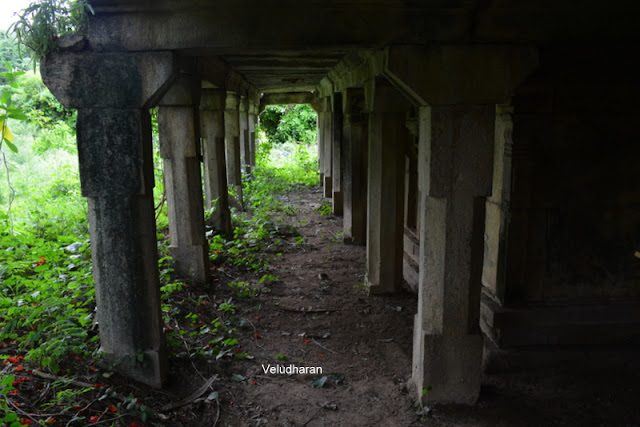17th June 2018.
This Sri Maruleshwara Shiva temple is one of the Shiva
temples of Panchalinga Temples in and around of Talakad. Sri Pataleshwara / Pataleshwar Temple, Maruleshwara Temple and Vaidyanatheshwara Temples are near to each
other and Arkeshwara temple and Mallikarjuna temples are out side Talakad. We
had visited the three Shiva temples out of 5 Shiva Temples in Talakadu.
These three temples are once under sand dunes. Excavated by the Archaeological
Survey of India ( ASI) during 1970s and protective walls are also constructed
around the temple. This may be due change of direction of Kaveri River or
due to flood. But there is a local legend behind this phenomena.
Moolavar : Sri Maruleshwara
Some of the important details are…
This temple is also facing east of about 20 feet below the
ground level with protective walls. A Hero stone and half buried statues are out side the sanctum. It was believed that the moolavar Shiv linga was
installed and worshiped by Brahma. Moolavar Maruleshwara is little large made out of sand stone also called as Saikateshwara ( Sand ). ( Maralu in kannada means sand ). Gangas period murtis of Maheswarar, Vishnu, Ambiga,
Pickshadanar, Durgai, Murugan/ Kartikeya, Surya, and Vinayagar are in the
artha mandapam.
ARCHITECTURE
The sanctum sanctorum consists of sanctum, antarala and Artha mandapam. The sanctum plinth has jagathi, kumuda, gala and mahapatti makes the plinth as padabandha adhisthana. The vimana above the sanctum was built during recent years.
HISTORY AND INSCRIPTIONS
It was believed that the this temple was constructed by
Gangas during 10th Century.
LEGENDS
As per the local legend, during 17th century, the Mysore king Raja wodeyar made Tirumalaraja also known as Ranga Raya as a care taker of Srirangapatna. His second wife Alamelamma took over when her husband left for Talakadu. She had a lot of jewelleries. When her husband was infected with a incurable decease, She headed towards Talakadu. When she was Travelling to talakadu, the Mysore king send his army people to rob the Jewelleries of Alamelamma. Fearing from the Raja Wodeyars army, She threw all the jewelleries in to the River Kaveri and ends her life by jumping in to the river. Before jumping she gave a curse…
"Talakadu Maralaagi (Talakadu become sandy – தலக்காடு மணல்மேடாகட்டும்).
Malingi Maduvaagi (Malingi become whirlpool – மலிங்கி மடுவாகட்டும் ).
Mysore dhorege makkalagade hogali (Mysore kings never have children – மைசூர் மன்னனுக்கு வாரிசு இல்லாமல் போகட்டும்)."
To prove Alamelamma’s curse, the complete Talakadu was submerged under sand dunes and the same was excavated during 1911 by ASI. ( The actual reason may be due to the flood in the river and might have changed its course ). The Mysore Kings don’t have Children till 20th Century. It was learnt that the present King had a Child during recent years.
TEMPLE TIMINGS:
The temple will be kept opened between 08.00 hrs
to 18.30 Hrs.
HOW TO REACH:
Talakadu ia bout 29 KM from T Narasipura and 45
KM from Mysore and 130 KM from Bangalore.
KSRTC buses are available fro T Narasipura and
Mysore.
LOCATION:CLICK HERE
Hero stone
half buried statues
Pickshadanar
Vishnu
Durga and Karthikeya
---OM SHIVAYA NAMA---


















































